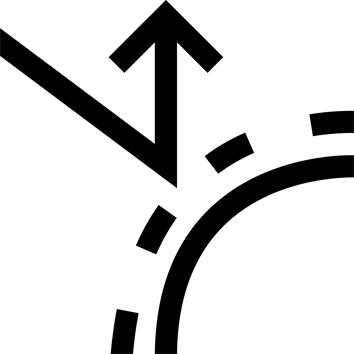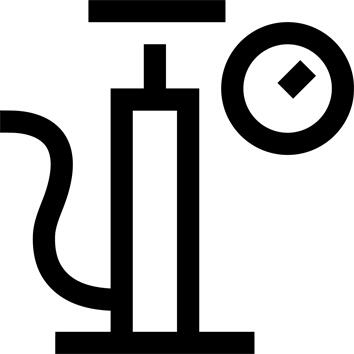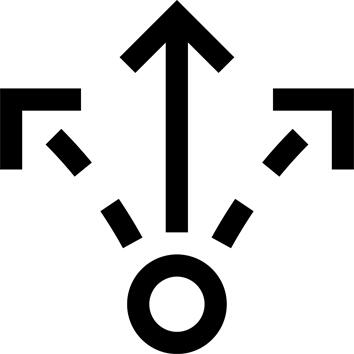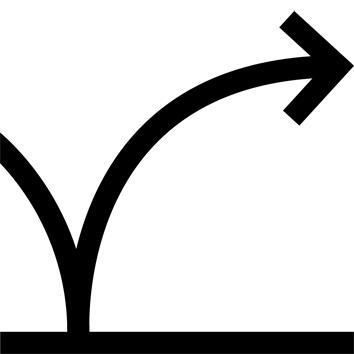This balloon has a story for you
For this FIFA QUALITY PRO-approved soccer ball, our designers have chosen thermobonded (seamless) technology to guarantee perfect sphericity and greater precision in your shots. What's more, this technology guarantees greater waterproofing during rainy weather sessions. Finally, to optimize the ball's sphericity, we've chosen a laminated bladder (a strip of fabric glued to the bladder).
A beach ball?
We know that stability of trajectory is very important, whether for players and/or goalkeepers, particularly for long play or strikes. Traditionally designed with 32 panels, we have developed the F900 with 12 identical panels. What's more, all 12 panels are thermally bonded and combined with grooves. This greatly improves the ball's stability in the air, making it more enjoyable to play.
Exclusive to Kipsta
We know that during matches, the difference often comes down to details. For this F900 ball, we wanted to pay particular attention to trajectory stability, to enable players and goalkeepers to get the best grip on the ball in the air. To achieve this, we tested different outer panels and chose the one that gave the best results. This 12-panel design, combined with embossed lines, is exclusive to Kipsta.
Did you say FIFA QUALITY PRO?
In order to meet the demands of competitive soccer with the utmost precision, we have subjected it to numerous laboratory tests. Each test is presented below.
Too light? Too heavy? The weight is standardized...
This ball weighs between 420g and 445g (size 5) and meets official FIFA standards.
FIFA QUALITY PRO certification.
What size, what circumference?
The size of this ball is between 68.5cm and 69.5cm (size 5) and meets official FIFA standards.
FIFA QUALITY PRO approval.
Between 68.5 and 69.5 cm
A round ball, really?
Here's how the sphericity test works:
Variation of the measured average: maximum 1.5% (FIFA QUALITY PRO approval).
We measure the sphericity of the ball at 4,500 different points and look at the deviations observed.
If the deviation exceeds 1.5% (FIFA QUALITY PRO standard), our engineers are tasked with improving the sphericity to guarantee a consistent rebound.
Maximum pressure loss test: we tell you...
Here's the pressure loss test:
We inflate the balloon to the recommended pressure (i.e. 0.8 bar).
72 hours later, the balloon should have lost no more than 15% of its pressure, i.e. around 0.1 bar (FIFA QUALITY PRO certification). The pressure after 72 hours should therefore be around 0.7 bar.
This also means that it's perfectly normal for a ball to lose pressure after a few days.
We also tested the balloon's water absorption ...
Here's the water absorption test:
In the laboratory, we simulate playing conditions in the rain by soaking the ball in 2 cm of water on a pivoting support while applying 250 compressions.
At the end of the test, the ball must not have gained more than 10% of its weight (FIFA QUALITY PRO approval).
This is one of the advantages of the heat-sealed process: water absorption is limited compared with other processes (machine-sewn, for example).
When the rebound goes, everything goes
Here's the bounce test:
The ball is dropped 10 times onto a steel plate from a height of 2 metres.
The variation in bounce height must be between 135 and 155 cm, with a maximum difference of 10 cm between the highest and lowest bounces per ball.
Not bad at all!
The most demanding test we put this ball through is the machine kick test.
The ball must withstand 2,500 kicks against an inclined concrete surface at 50km/h from a distance of 2.5m.
At the end of this test, we check:
- the general condition of the ball: the seams must withstand this test
- the circumference: it must not have increased by more than 1.0 cm
- the sphericity: it must not have varied by more than 1.5%
- the pressure: the ball must not have lost more than 10.0%.
And what do you think?
Your opinions are essential, and help us to continually improve our products.
Many thanks in advance for sharing your experiences.




